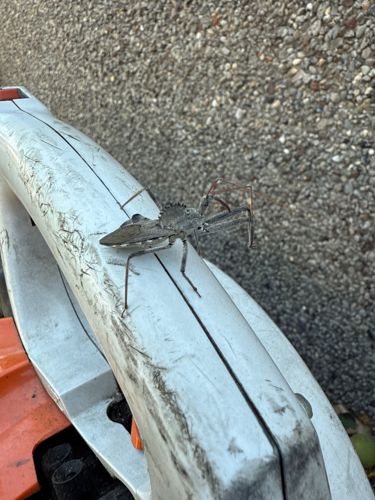Wheel Bug
Scientific Name: Arilus cristatus
Order & Family: Order: Hemiptera, Family: Reduviidae (Assassin Bugs)
Size: Adults typically range from 25 to 38 mm (1 to 1.5 inches) in length, making them one of the largest assassin bugs in North America.

Natural Habitat
Wheel bugs are commonly found in gardens, agricultural fields, woodlands, and urban landscapes throughout North America. They prefer areas with abundant prey and can often be seen on shrubs, trees, and ornamental plants.
Diet & Feeding
The wheel bug is a voracious predator, feeding on a wide variety of insects, including caterpillars, leafhoppers, stink bugs, Japanese beetles, flies, and other soft-bodied insects. They inject digestive enzymes into their prey through their rostrum, then suck out the liquefied contents.
Behavior Patterns
Wheel bugs are ambush predators, often waiting motionless for prey. They are solitary insects and generally slow-moving. When threatened, they can deliver a painful bite. They undergo incomplete metamorphosis, with nymphs hatching from distinct, urn-shaped eggs laid in hexagonal clusters.
Risks & Benefits
Potential Risk: Wheel bugs can deliver a very painful bite if disturbed or handled. While not medically significant, the bite can cause localized pain, redness, and swelling that can last for several days. Potential Benefit: Wheel bugs are highly beneficial predators in gardens and agricultural settings, helping to control populations of various pest insects, reducing the need for chemical pesticides.
Identified on: 8/11/2025